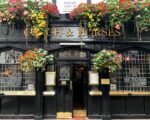National Beverage is finally seeing some fizz again. After quarters of flat or falling demand, the maker of LaCroix seltzers posted stronger-than-expected results this past quarter, fueled by clever marketing and a burst of new flavors.
Shares of the Florida-based company jumped 5% last week, nearing $47, after it surprised Wall Street with a 5.5% revenue jump in its fourth quarter. That uptick, driven largely by better volumes in both its health-focused Power+ Brands and its older carbonated drinks, may signal a turning point. After all, this is a company that had been under pressure to prove LaCroix still has sparkle in a saturated market.
The performance in the fourth quarter helped offset a lackluster full year. But with a refreshed focus on flavor innovation and cost control, National Beverage is banking on a comeback that sticks.
LaCroix’s Refresh: Bold Flavors, Bold Moves
LaCroix has always been a quirky brand—neon packaging, funky names, no sugar, no calories. It exploded in popularity during the mid-2010s, riding the wave of millennials ditching soda for something bubblier and healthier. But recently, the buzz began to fade.
To bring back excitement, the company doubled down on new flavors. That strategy seems to be working.

National Beverage rolled out several additions to the LaCroix line-up this past quarter. While they didn’t say which ones specifically drove the gains, insiders point to the popularity of newer hits like “Beach Plum,” “Black Razzberry,” and “Cherry Blossom.”
Even more interesting? The company is playing with regional exclusivity, releasing some flavors in specific U.S. markets to test consumer loyalty.
One-sentence paragraph: That’s a clever way to gauge real demand without committing nationwide.
Volume Rebound Comes at the Right Time
The most notable win for investors was the volume uptick in Q4. That broke a two-quarter slump and breathed life back into what was beginning to look like a flatlining growth story.
Revenue for the fourth quarter reached $313.6 million—up from $297.2 million a year ago. Most of that was driven by LaCroix and its carbonated drinks under brands like Shasta and Faygo. Analysts had worried those old-school names might weigh down performance, but even that part of the business showed signs of resilience.
Meanwhile, full-year revenue came in at just over $1.2 billion—basically flat. But there was some good news tucked in.
• Full-year earnings jumped to $2.00 per share, up from $1.89 last year
• The company saved on freight costs and pulled back slightly on its marketing budget
• Pricing stayed steady, helping margins remain healthy
Smart Spending Is Keeping Profits Bubbling
While volume gains are good, what really stood out was National Beverage’s discipline on costs. The company cut shipping and handling expenses and tweaked its promotional outlay, all without hurting brand visibility.
The strategy: let LaCroix speak for itself, and let the flavors carry the load.
It’s worth noting that marketing spend, especially across the food and beverage sector, has been trending higher with rising digital ad rates. National Beverage has instead relied more on word-of-mouth, creative packaging, and social buzz to drive sales—at least for now.
And then there’s the impact of lower fuel prices and logistics optimization. Those factors helped soften the blow of flat full-year volumes. According to its own data, the company managed to trim distribution costs by more than 8% this year.
Just one sentence here: That kind of control matters in a business with tight margins.
The FIZZ Breakdown: A Look at the Numbers
Here’s a quick overview of National Beverage’s financial snapshot for FY 2025.
| Metric | FY 2024 | FY 2025 | Change |
|---|---|---|---|
| Revenue | $1.18 B | $1.20 B | +1.7% |
| Net Income | $177 M | $186 M | +5.1% |
| Earnings Per Share (EPS) | $1.89 | $2.00 | +5.8% |
| Q4 Revenue | $297.2 M | $313.6 M | +5.5% |
| Q4 Volume Growth | Negative | Positive | Reversed |
Even a modest year-over-year improvement in earnings tells a bigger story—FIZZ isn’t in panic mode. It’s moving with precision and measured optimism.
A Shift That Started Back in 2010
National Beverage didn’t always look like this. Back in the early 2000s, it was still heavily focused on sugary sodas and old-school branding. That changed in 2010 when it pivoted sharply toward health-conscious consumers.
That’s when LaCroix took center stage, eventually becoming its flagship product and now accounting for more than 80% of total revenue.
The company also owns Rip It (energy drinks), Everfresh (juices), and its legacy soda brands Shasta and Faygo. But make no mistake—LaCroix pays the bills.
One thing that’s worked well: its ability to stay weird and nostalgic while remaining health-forward. It’s a tricky combo.
Still Some Hurdles Ahead
Even with this quarter’s rebound, the company isn’t out of the woods. The zero-calorie sparkling water segment has gotten crowded. Brands like Spindrift, Bubly (owned by PepsiCo), and AHA (from Coca-Cola) have been gaining market share.
Plus, inflation-weary shoppers are trading down in some grocery categories, opting for private labels or skipping premium drinks entirely.
That puts pressure on FIZZ to keep innovating without going overboard on spending. Investors seem cautiously optimistic for now, but the bar keeps rising.
There’s also the fact that National Beverage doesn’t do traditional earnings calls. The company prefers to release statements and filings instead, which some on Wall Street don’t love.
But CEO Nick Caporella, now in his 80s, has long resisted analysts’ norms. His approach is old-school but has worked more often than not.








